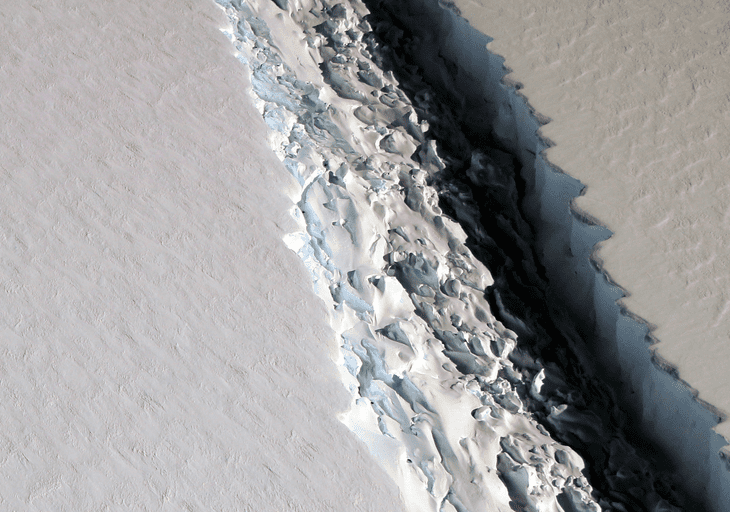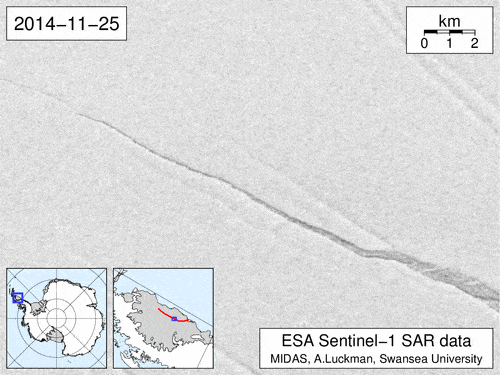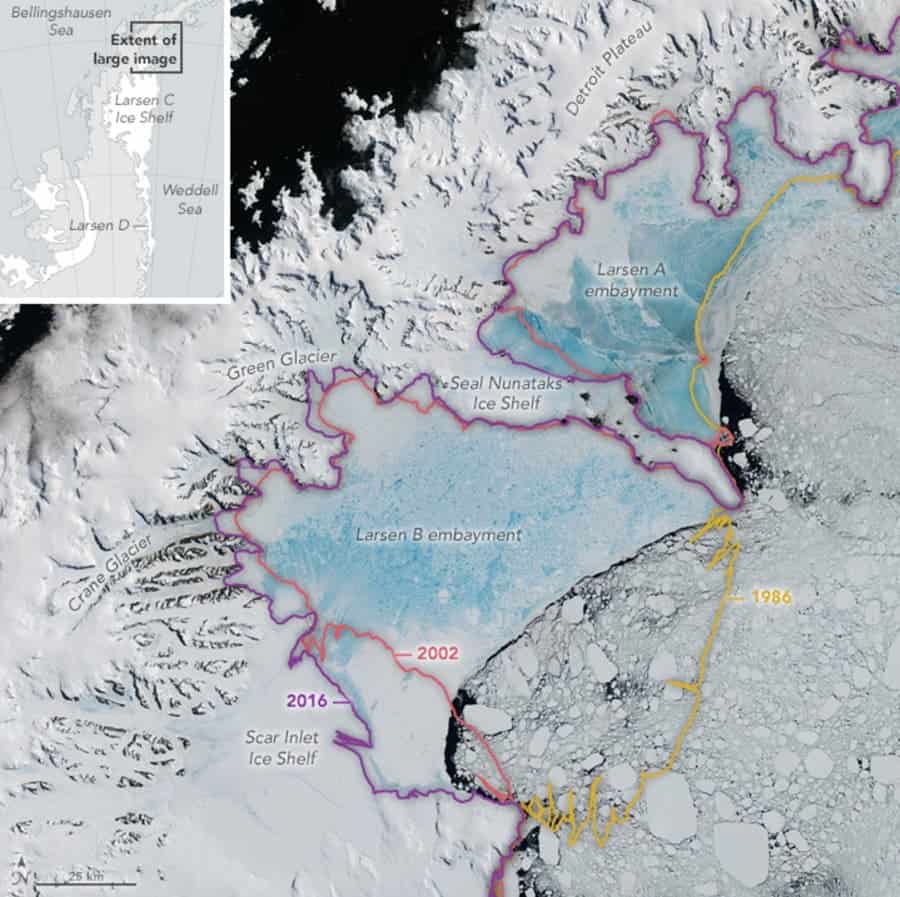A crack in Antarctica’s fourth-largest ice sheet has grown by 17 miles in length only in the last two months threatening to split open the largest iceberg ever. British researchers who had been studying changes in the world’s atmosphere and climate from the remote Halley VI base in Antarctica were ordered to retreat immediately for their own safety. The decision is temporary but if things take a turn for the worse, the base might be abandoned for good.
“The science that we do at Halley isn’t just about exploring. It’s actually making measurements that really inform how we interact with our planet, about the risk of severe space weather storms that might knock out our satellite GPS systems,” said David Vaughan, the director of science for British Antarctic Survey, which runs Halley VI, for PBS Newshour.
Right now, the Larson C ice shelf, which is twice the size of Hawaii, is tethered to the rest of the ice by a strip only 17 miles long. The crack in Larsen C is already 100 miles in length, and in some portions, the fracture is up to 2 miles wide. A huge iceberg the size of Delaware could completely break free in the coming month.
“The crack that you are seeing goes all the way down to the ocean. And if you can look deep enough in there, you would see seawater. Really, the potential interaction between those two cracks and how then the ice shelf would respond as a whole, that we actually find very unpredictable,” Vaughan said.
“Maybe the ice shelf will go back to a new equilibrium in time, but, at the moment, we just can’t predict with any certainty how long that will take.”
Larson C’s breakup has been monitored aerially and from space using satellites since 2014. The shelf has gradually crumbled in steps as the rift tip moves from one region of softer ice to another, according to Adrian Luckman of Swansea University in Wales, a researcher who has been studying the ice sheet’s collapse for the past three years.
Since 1995, the whole Larson Ice Shelf lost 75 percent of its mass. Previously, a 579-square-mile (1,500 square kilometers) chunk of Larsen A broke off in 1995. In 2002, a 1,255 square miles (3,250 square km) portion of Larson B floated away. Landsat satellite imagery below illustrates the dimension of ice crumbling in the 5,000-square-mile Larson ice sheet, which sits on the northeast coast of the Antarctic Peninsula along the Weddell Sea.
Luckman said the Larsen collapse is mainly a geographical event, though a changing climate has an influence. According to estimates, if all the ice that the Larsen C shelf currently holds back entered the sea, global waters could rise by up to 10cm.












